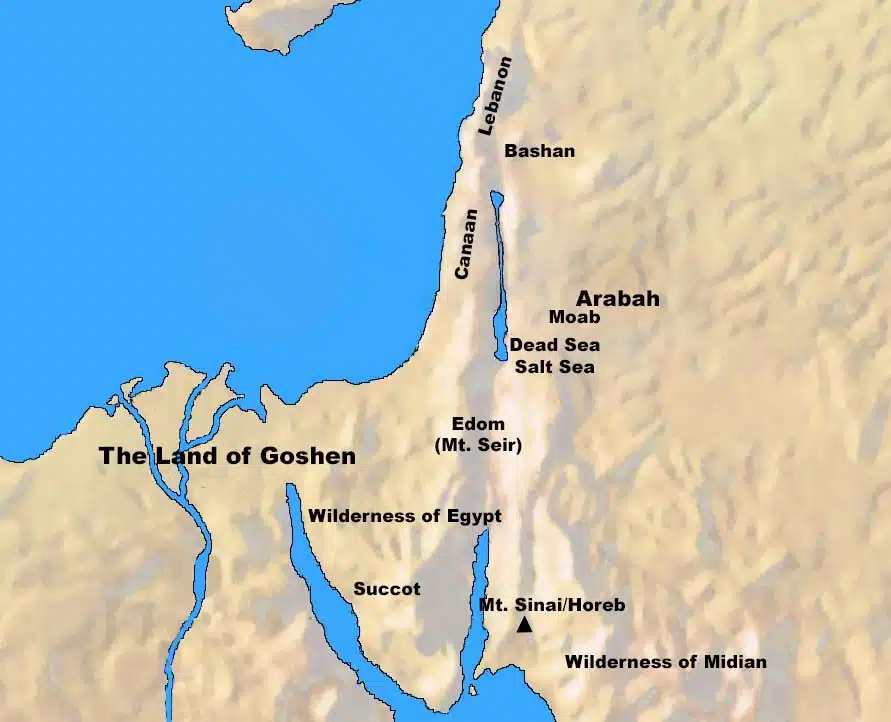In verses 29-33, the duties of the Merarites were discussed. These duties involved the items comprising the tabernacle’s frame. This included the crossbars, bases, pegs, and other related items.
The last family discussed are the sons of Merari, the third and final son of Levi (v. 29). Like the families of Kohath and Gershon, Moses was to number them by their families, by their fathers’ households. Again, included in the census were men from thirty years and upward even to fifty years old, you shall number them (v. 30). The resulting census would count everyone who enters the service to do the work of the tent of meeting. Like the families of Merari’s two brothers, they would be assigned to serve in the tabernacle and be responsible for the carrying and maintenance of items that made up the structure itself.
Verses 31 and 32 list the items that comprised the duty of their loads, for all their service in the tent of meeting (v. 31), which included:
- The boards of the tabernacle and its bars and its pillars and its sockets. The “boards” were essentially wooden frames that comprised the walls of the tabernacle (see Exodus 26:15-30; 36:20ff). Some think that these frames were trellis-like. The “bars” were pieces of wood used to connect the “boards.” The “sockets” were made of silver (Exodus 26:19) and served as support bases for the frames comprising the walls of the tabernacle.
- The pillars around the court and their sockets and their pegs and their cords, with all their equipment and with all their service. The “pillars” were pieces of wood that stood upright and served as supports for the curtains of the court. The “sockets” were bases upon which the pillars were placed. The “pegs,” made of bronze (Exodus 27:19), held the pillars in place. The “cords” were used when erecting the tabernacle and the court and securing them in place.
The LORD gave Moses the task to assign each man by name the items he is to carry. Each individual was given a particular part of the tabernacle or the court structure to carry and to maintain. Moses delegated the responsibility and set up a structure of authority, that the work might be done in an orderly and efficient manner.
Moses then gave a summary of the duties of the family of Merari in verse 33 by saying that this is the service of the families of the sons of Merari, according to all their service in the tent of meeting. As with the Gershonites, the sons of Merari were placed under the direction of Ithamar the son of Aaron the priest (v. 33). Again, authority was established in order to produce order and efficiency.
Biblical Text:
29 “As for the sons of Merari, you shall number them by their families, by their fathers’ households; 30 from thirty years and upward even to fifty years old, you shall number them, everyone who enters the service to do the work of the tent of meeting. 31 Now this is the duty of their loads, for all their service in the tent of meeting: the boards of the tabernacle and its bars and its pillars and its sockets, 32 and the pillars around the court and their sockets and their pegs and their cords, with all their equipment and with all their service; and you shall assign each man by name the items he is to carry. 33 This is the service of the families of the sons of Merari, according to all their service in the tent of meeting, under the direction of Ithamar the son of Aaron the priest.”
Check out our other commentaries:
-
Luke 9:1-3 meaning
Jesus sends out the twelve disciples...... -
Acts 12:1-5 meaning
Herod Agrippa I begins persecuting the believers in Jerusalem. He executes James, one of the twelve Apostles. This violence makes the Pharisees and Sadducees happy,...... -
Deuteronomy 33:12 meaning
Moses pronounces blessings on the tribe of Benjamin....... -
Ecclesiastes 5:8 meaning
Bureaucracy contributes to injustice....... -
Exodus 29:19-21 meaning
The LORD describes the sacrifice of the third animal, the second ram.......



